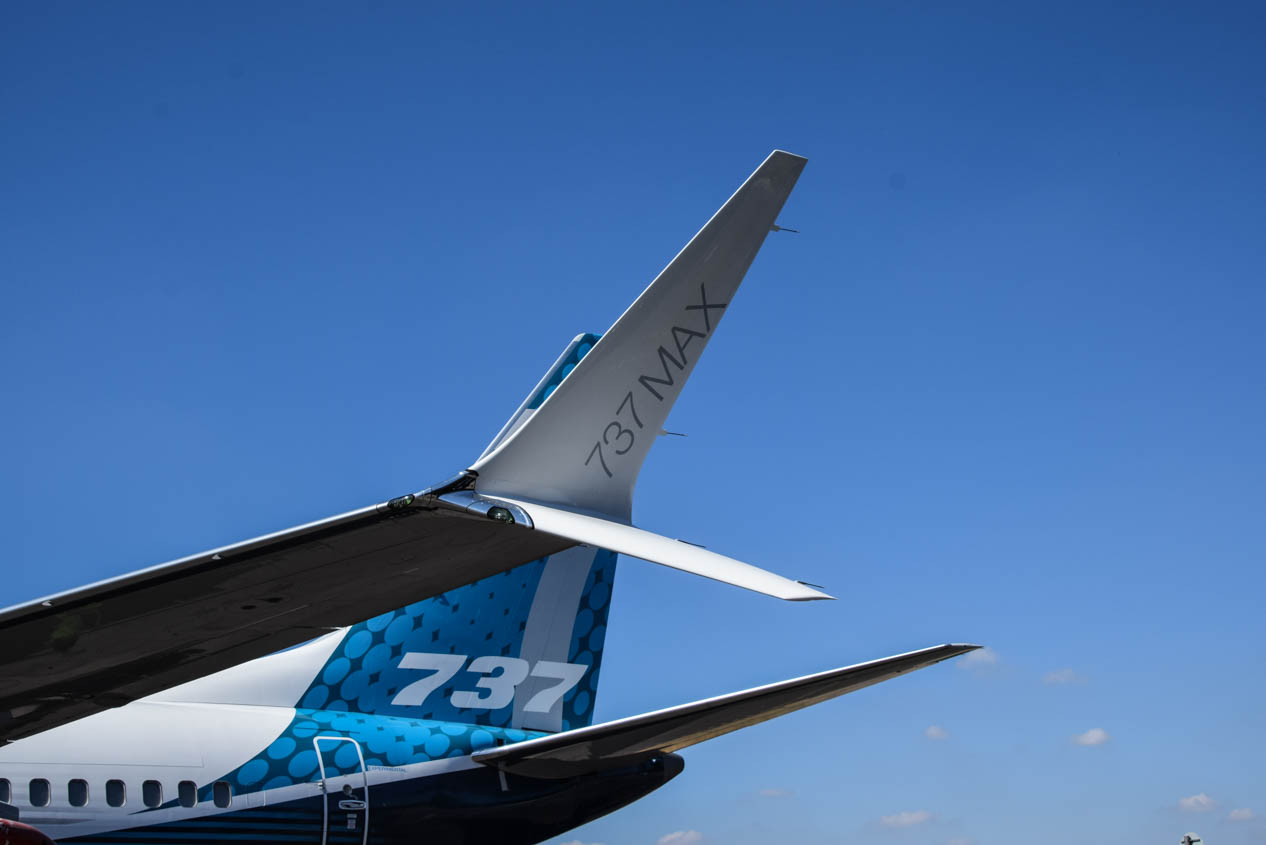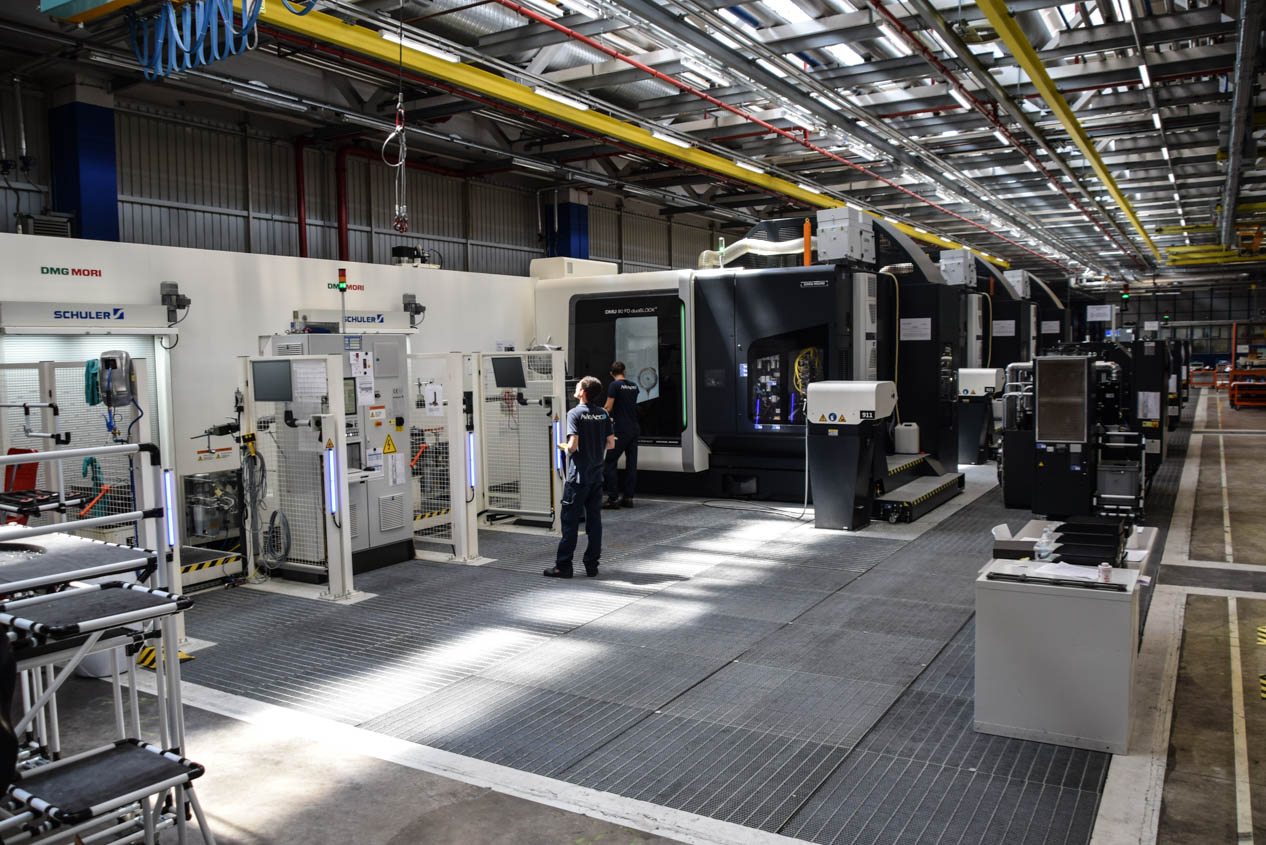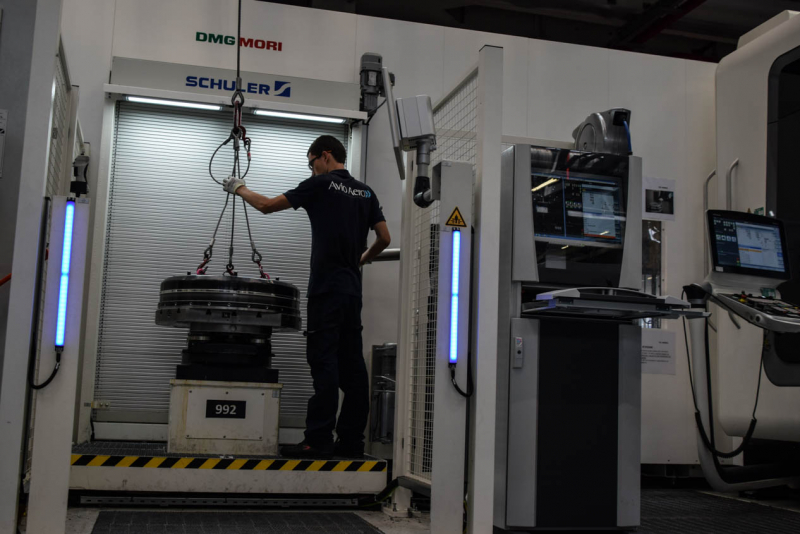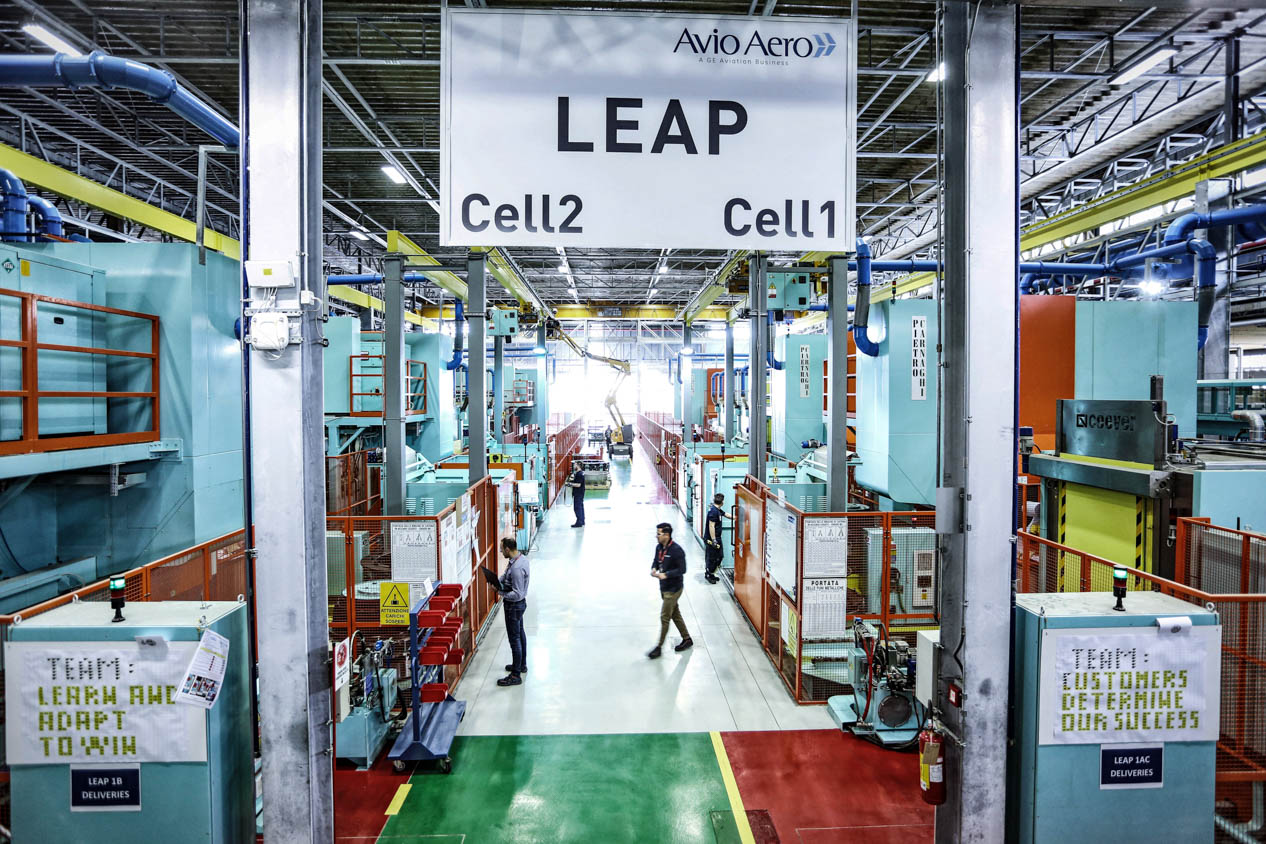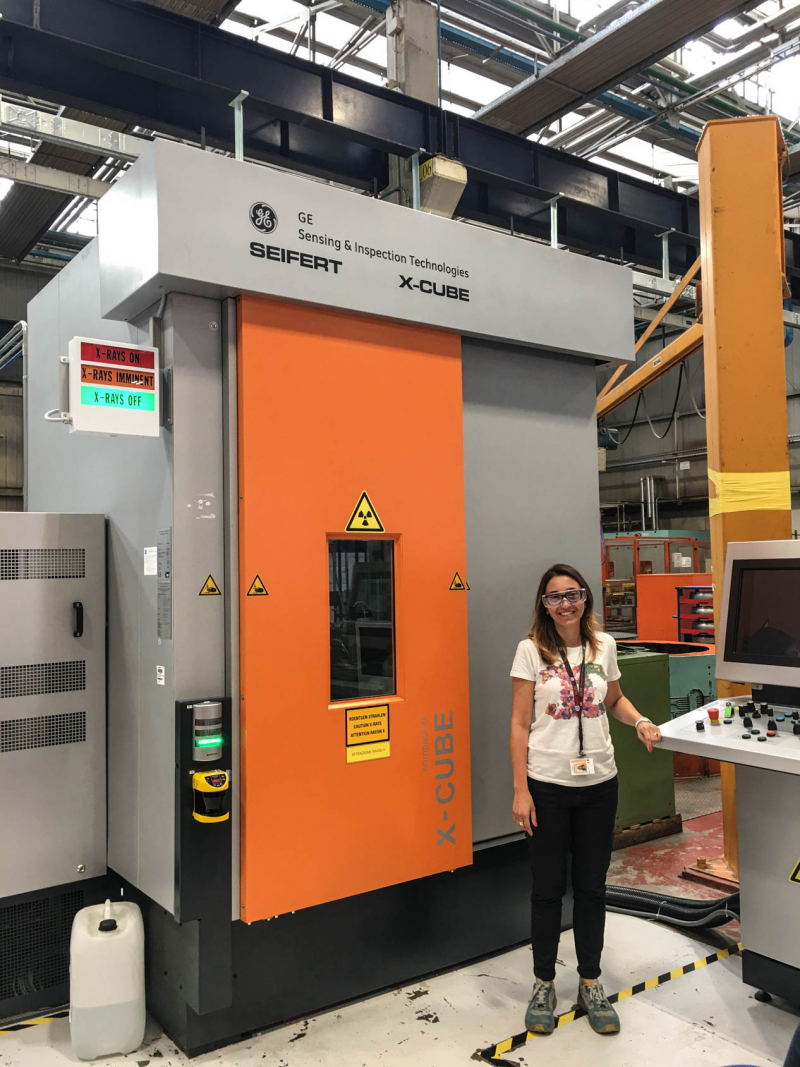Aviation
Limitless LEAP
Just two years after the start of operation, one thousand engines have already been assembled for the program that is breaking all records and testing the mettle of the production teams in Italy and Poland.
Jul 2018
Perhaps not everyone knows that the name of the new, fastest-selling turbofan engine manufactured by CFM International (the 44-years old joint venture between GE Aviation and Safran Aircraft Engines) - the LEAP - is actually an acronym for Leading Edge Aviation Propulsion. Whilst most people probably learned about the very first scheduled flight of this engine in August 2016, on board a Pegasus Airlines Airbus 320 traveling from Istanbul to Antalya. This was the LEAP-1A version, which has since been joined by versions 1C and 1B, powering short-medium range, narrow-body, single-corridor aircraft capable of carrying from a minimum of 100 to a maximum of 280 passengers.
The acronym really hits the nail on the head because LEAP has the most advanced technologies in the aeronautical industry, including: 3D printed carbon fiber composite fan blades, lightweight materials for components (such as TiAl, a titanium and aluminum super alloy), 3D aerodynamic design. Technologies that guarantee the successor of the most widespread CFM56 a 15% reduction in fuel consumption, CO2 emissions, and nitrogen monoxide (NOx) emissions.
Born exactly 10 years ago, LEAP has been the fastest selling engine hit sensational commercial records that translate, to date, in over 15,250 engines ordered by more than one hundred companies around the world and 1.5 million flight hours already achieved by the end of June. The industrial echo of these astonishing numbers resounds in the goal of producing one thousand engines, reached just two years after its entry into service.
In terms of production, the final assembly of the three LEAP engine versions takes place at the Safran Aeroengine plants in Ville Roche (France) and at the GE Aviation plants in Durham (NC) and Lafayette (IN). In Italy and Poland, Avio Aero is responsible for the design and manufacture of various parts of the low-pressure turbine for all the engine versions: the fifth stage discs are produced in Rivalta, the external casings are made in Brindisi, the stator blades are manufactured in theBielsko Biala and Pomigliano plants, and the latter also produces the advanced combustion chamber.
This powerful production start has led to an equally powerful and advanced innovation of processes: in 2017, 4 new intelligent lines were installed in Brindisi to build the engine casing and, more recently, a further investment of €15 million in the Rivalta plant in Turin enabled the installation of a highly advanced line for the production of turbine discs. There are five machines in this highly automated line that perform three different types of machining. This required the joint and inter-functional work of five teams (the Rotating Components Center of Excellence, Industrial Technologies, Engineering, Sourcing and Facilities). This work took several months, given the considerable complexity of the system, and was aimed at selecting, designing and guaranteeing the reliability of the line that produced the first disc in February 2018.
Damiano Mazzotta, Leader of the Rotating Components CoE in Rivalta, retraces the stages of this tremendous technological challenge, launched in order to respond to the vertiginous increase in volumes: “In the space of four years we have gone from a few dozen units to one thousand discs produced at the end of May, with forecasts of 1,900 engines in 2019 and over two thousand in 2020. In this scenario, we have also set ourselves ambitious goals to reduce costs and production times.”
The project for the new line was launched in 2015 when the need arose to automate the production of discs. “The new cell has been designed to be flexible, thanks to an FMS (Flexible Manufacturing System), consisting of 3 lathes connected by an automatic and intelligent part conveyor, just like the one in Brindisi.”
As in the Brindisi plant, the supervisors and operators in Rivalta are able to program all the operations and machining on each individual disc and even to automate them, because the machines move and perform machining or tool changes, such as the logistical management of the individual parts according to the settings selected by staff who control them using the central software. “It is this flexibility that has enabled us to reduce the crossing time considerably,” continues Mazzotta. “This strong automation capacity frees operators from no value added activities, so that they can achieve challenging product cost objectives, and it gives our entire business a strong competitive edge. For example, measurement systems integrated with the software allow the disc to be checked both during as well as after machining, thanks to direct analysis and checks on the physical part, which is an important improvement in terms of quality.” This flexibility obtained by the Rivalta line enables progressive expansion: the addition of a fourth machine is expected by the end of the year and completion, in 2020, is expected with the installation of the fifth.
While LEAP’s commercial growth seems unstoppable, Avio Aero's industrial flexibility is ready to respond to future increases in volumes: for example, with the new investments planned for the Brindisi plant, where the first ever LEAP engine case was produced and shipped in January 2016. Since then production volumes at the Brindisi plant have increased from 200% to over 500%. “Currently, 23 LEAP cases leave our four intelligent lines connected to the Smartshop digital systemeach week,” says Fabio Galasso, who has worked closely with Mazzotta and in the Frames & Cases center in Brindisi, and who leads the industrial programing for the GEnx program and the LM turbines.The work philosophy shared by Galasso’s team requires that all members know how to manage and follow all the machining operations of the casings’ production cycles. In Brindisi, after Smartshop another digital application, e-vouchering, came into use, now spread in the company’s other industrial sites, to track every single machining a part has undergone. “The digital Smartshop system in Brindisi will no longer manage just the new LEAP lines, but all 48 machines will be connected by the end of the year,” adds Galasso. The investments at Brindisi will not only enable LEAP to be upgraded with two new machines, but up to 12 new large machines for the huge new generation GE9X engine will arrive in the building next to the large Frames & Cases center.
The production of stator blades for low-pressure aero turbines connects from different perspectives Avio Aero’s Airfoils center in Pomigliano (Naples) with the Bielsko Biala plant (Poland): production and design specialities, collaboration and exchange of technological skills. Of the main programs handled by the two manufacturing teams since 2015 LEAP obviously stands out. “LEAP has totally changed our idea of production. We wanted to optimize and simplify production and avoid wasting time, so we created cells in which operators carry out up to 7 different kinds of machining applying Lean Manufacturing principles.” This is how Wojciech Korczyk, Production Technology Manager at the Polish site introduces the hyper-technological cells, equipped with robots and electronics, managed through a computerized interface by each operator.
The Italo-Polish industrial technical community and collaboration can also be seen in the use of advanced robotics for the production of LEAP blades. This is confirmed by Nicola Trey, Assets, Investments & Machinery Manager, “Three areas of our factory are dedicated to third, fourth and fifth stage stator blades, 18 machines in total; the robotic aid that we have introduced is slightly different from the one in Bielsko, it is less complex equipment though still designed to increase efficiency. We adopted it in the LEAP cells, after having successfully tested it for GEnx production.” Unlike the Polish robotic arm, a kind of elegant, white cabinet with rectangular windows has been installed next to the LEAP grinding machines in Pomigliano. This cabinet houses a robotic shelf, which transports equipment between the work area and the loading area and uses an intuitive interface to manage the queue of machining operations programed by the operators directly.
However, the Neapolitan plant is also home to Avio Aero's main center for the design and manufacture of combustion chambers, the flaming heart of an aircraft engine. The first LEAP combustor left the plant in March 2017, and today 12 are produced per week. “We aim to reach 15 a week by the end of the year and 25 in 2019. Its geometry and uniqueness make it a complex product, as does the exceptional demand for it,” says Emanuela Genua, leader of the Mission Based Team dedicated to the production of LEAP in the Combustors center which, from the very beginning, worked in collaboration with GE Aviation’s US team in Terre Haute (Indiana), another center specializing in combustor production. “We entered the program at full volume, we faced the challenge of time by building a large team, accompanied by figures such as engineers-in-the-shop who connect the project to the mechanical processing, and we have many sub-components and a vast array of suppliers from around the globe.” The design of the combustor is in the hands of the Engineering Design Center in Warsaw, which is part of the GE Aviation engineering collaboration network, liaising with the Avio Aero engineering teams for production management and continuous improvement. Giacinto De Taranto is one of the Engineers-in-the-shop in Pomigliano and, on the subject of the uniqueness of this component, he says that “the main innovations are the shape of the holes covering the external circular part and the fact that it is designed with a double wall.” More specifically, he adds that “the double wall gives us an advantage in terms of cooling, thanks to these special holes on the external circular surface of the combustor that encloses the actual combustion chamber, where the flame is generated and the temperatures are very high.” De Taranto worked with the Avio Aero's team in charge of designing the GE Catalyst combustor, which has the same “double wall”.
In the building dedicated to the LEAP combustor - among large advanced machines, annular chambers and circular parts resembling sophisticated metal donuts - attention is caught by a large cabin with the legendary GE logo. This cabin is for the X-ray analysis of the combustion chambers after they have been welded, or given their classic circular shape. Biagio Caccia, the cabin operator, says that “it is the latest generation cabin, the same as the one used in Terre Haute. We get X-rays in just a few minutes compared to the traditional X-ray machines available, and so we can carry out accurate quality control with the image projected on the screens in real time.” In this way, LEAP can also count on increased digitization of the shop floors.



